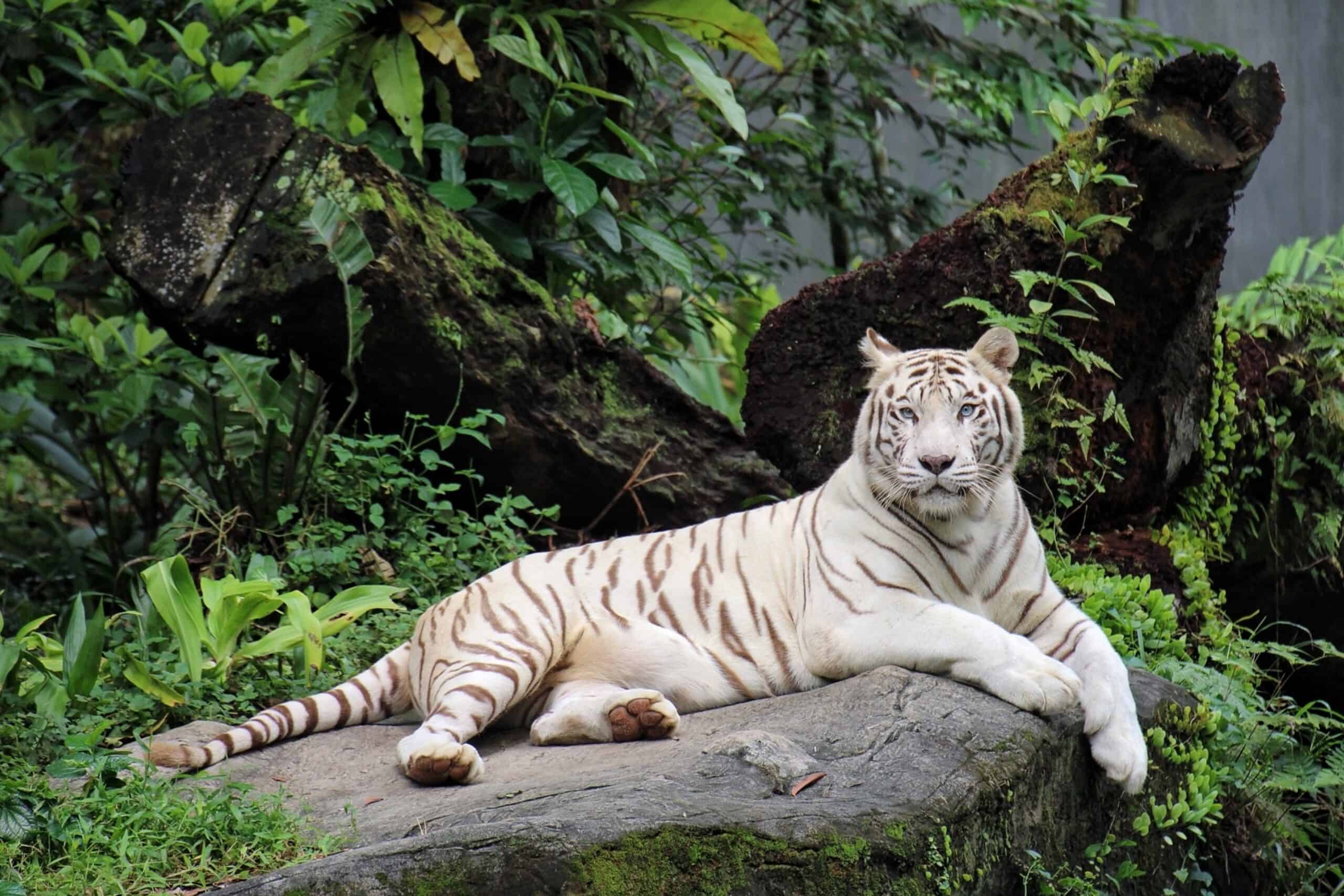In our ever-changing world, many plant species are facing the threat of extinction, often overlooked in the broader conversation about conservation. These plants, some of which are found only in small, specific habitats, play crucial roles in their ecosystems and hold unique beauty and significance. The top 15 endangered plants highlighted in this article are among those that urgently need our attention and protection. By understanding the challenges they face and the importance of preserving them, we can contribute to efforts that ensure these plants continue to thrive for generations to come.
Hibiscadelphus Genus (Hibiscadelphus spp.)
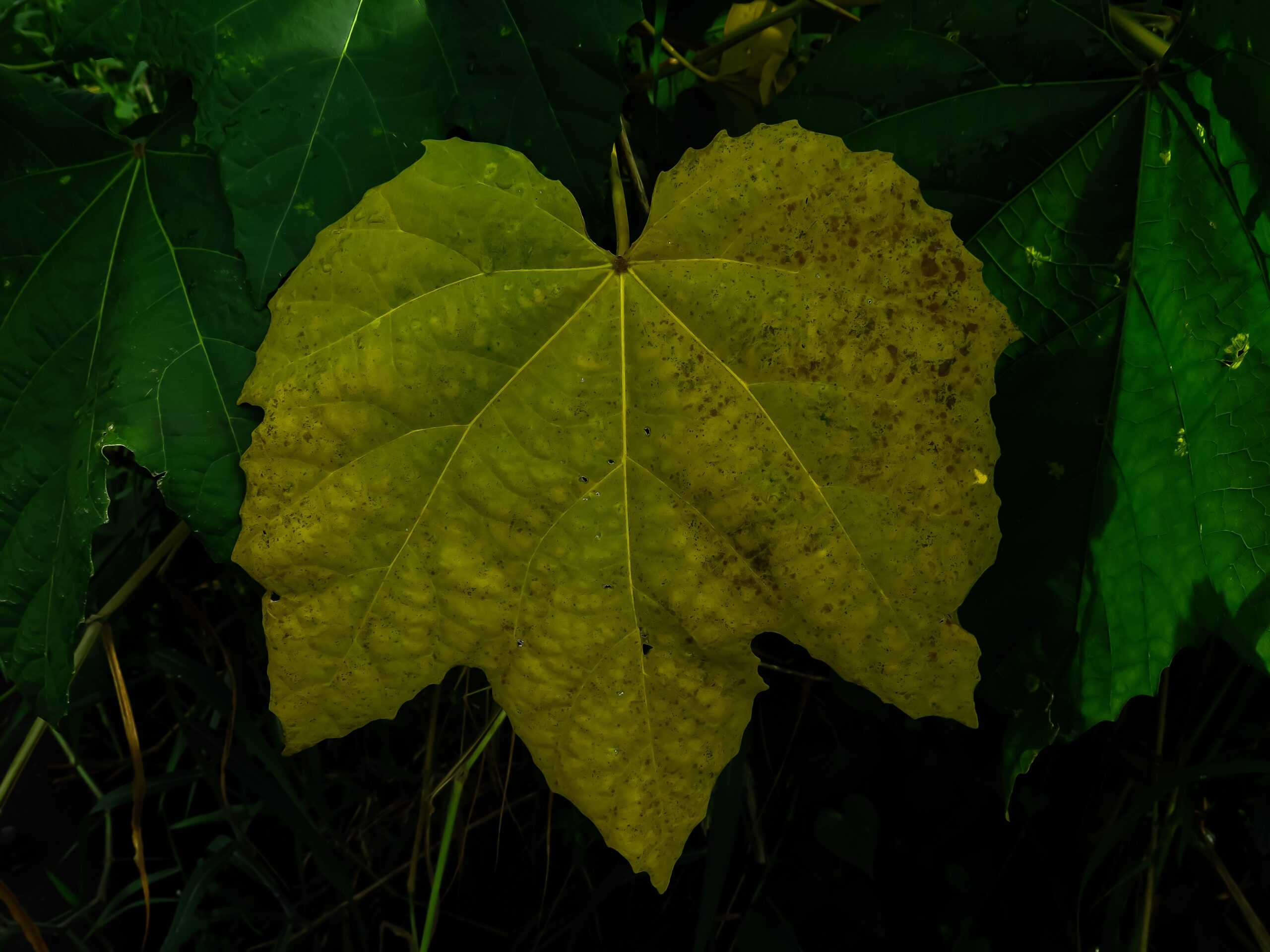
The Hibiscadelphus genus is an extraordinary group of flowering plants endemic to the Hawaiian Islands, consisting of several species that showcase vibrant, tubular yellow or greenish-yellow flowers. These plants are part of the Malvaceae family, closely related to the more widely known hibiscus. However, their allure is coupled with extreme vulnerability. The genus is critically endangered, with some species already extinct in the wild and others teetering on the brink. The primary threats to Hibiscadelphus include habitat loss due to deforestation, particularly as land is cleared for agriculture and urban development. The introduction of invasive species, such as feral goats and pigs, has also decimated their populations by destroying their natural habitats and feeding on young plants. Climate change further exacerbates these challenges by altering the delicate ecosystems that these plants rely on. The rediscovery of species like Hibiscadelphus woodii, once thought extinct, underscores the urgency of conservation efforts. These efforts include habitat restoration, cultivation in botanical gardens, and fencing off critical habitats to protect them from invasive species. The survival of the Hibiscadelphus genus is not just a matter of preserving a single plant species but of safeguarding an entire ecosystem that depends on these unique flowering plants.
Venus Flytrap (Dionaea muscipula)
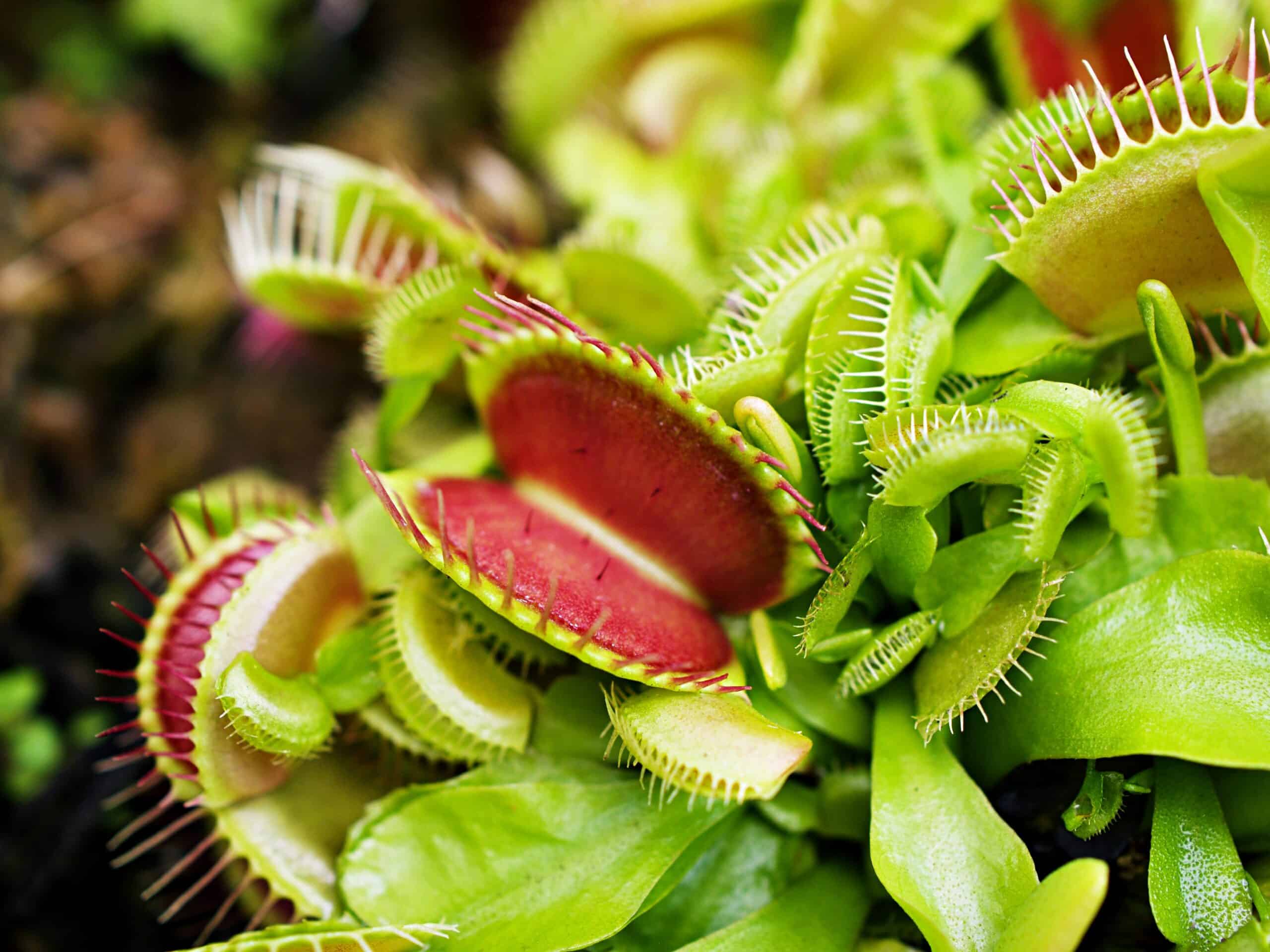
The Venus Flytrap is one of the most iconic carnivorous plants in the world, famed for its rapid, snap-shut trap mechanism that captures insects and small prey. This remarkable plant is native to the subtropical wetlands of North and South Carolina in the United States, where it thrives in nutrient-poor, acidic soils that require it to supplement its diet with animal protein. Despite its popularity, the Venus Flytrap is classified as vulnerable, with wild populations in significant decline. The primary threats to this plant include habitat destruction from urban development, agriculture, and fire suppression, all of which have led to the loss of the wetland ecosystems it depends on. Additionally, illegal poaching for the horticultural trade poses a severe threat, with collectors often uprooting entire plants from the wild. Climate change is another looming threat, as rising temperatures and altered precipitation patterns can disrupt the delicate balance of the wetlands where Venus Flytraps grow. Conservation efforts are multifaceted and include habitat protection, enforcement of laws against illegal collection, and cultivation in botanical gardens to reduce the demand for wild plants. Public education campaigns also play a critical role in raising awareness about the importance of preserving this unique species in its natural environment.
Running Buffalo Clover (Trifolium stoloniferum)
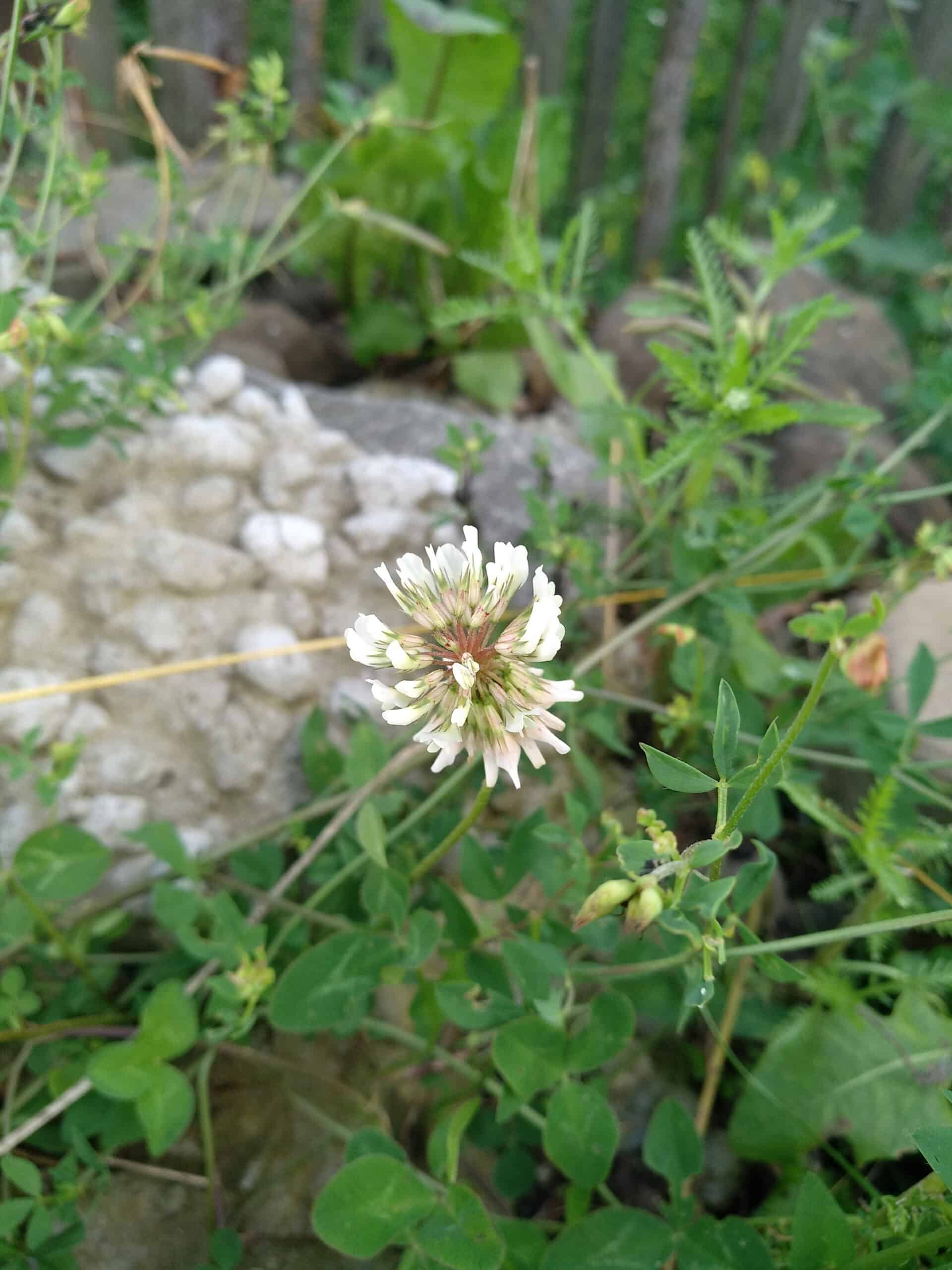
Running Buffalo Clover is a perennial plant that once flourished across the Midwest and Appalachian regions of the United States. This clover is named for its historical association with areas that were grazed by buffalo, whose movements and grazing patterns helped maintain the open, disturbed habitats that the plant prefers. Running Buffalo Clover has distinctive stolons, or runners, that allow it to spread across the ground, forming low, dense mats. However, the near-extinction of buffalo and the loss of natural grazing patterns have had devastating effects on this species. Today, Running Buffalo Clover is classified as endangered, with its populations severely diminished due to habitat destruction from agriculture, urban development, and the suppression of natural disturbances like fire and grazing. The fragmentation of its remaining habitats has further isolated populations, leading to a decline in genetic diversity and making the species more vulnerable to extinction. Conservation efforts focus on habitat restoration, including the reintroduction of controlled grazing and prescribed burns to mimic the natural disturbances that this plant requires. Seed banking and the propagation of plants in nurseries are also critical components of conservation strategies. Protecting Running Buffalo Clover is vital not only for preserving a unique species but also for maintaining the biodiversity and ecological balance of the regions where it once thrived.
Franciscan Manzanita (Arctostaphylos franciscana)
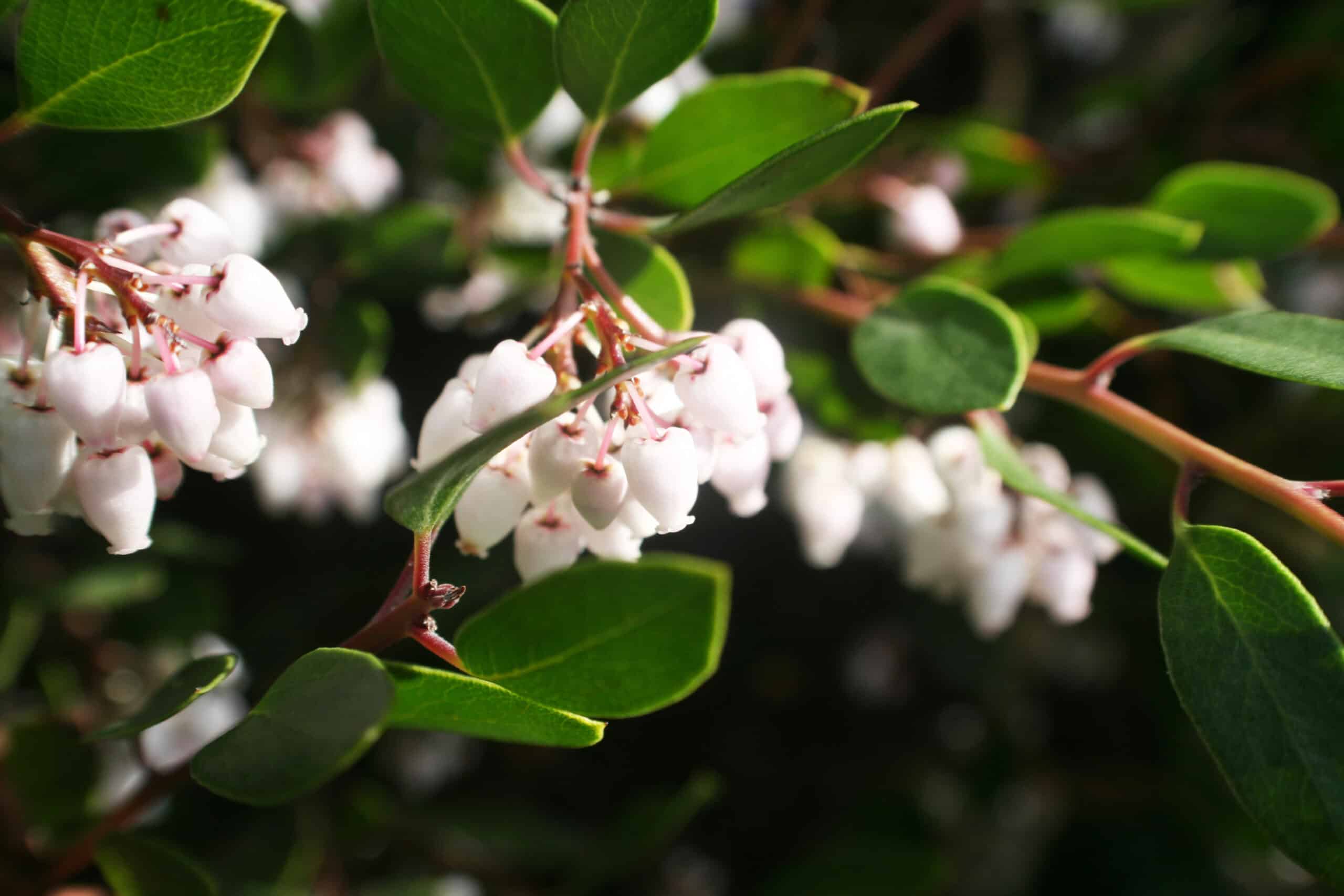
The Franciscan Manzanita is a rare and remarkable shrub native to the San Francisco Bay Area, known for its intricate, twisted branches, leathery leaves, and clusters of delicate pink or white flowers. This plant is part of the Arctostaphylos genus, which includes several species of manzanita, but the Franciscan Manzanita is particularly rare. It was once thought to be extinct in the wild until a single plant was serendipitously rediscovered in 2009 during a road construction project in San Francisco. The rediscovery of this plant has led to a renewed focus on its conservation, as it is now classified as critically endangered. The primary threats to the Franciscan Manzanita include urban development, which has destroyed much of its natural habitat, and habitat fragmentation, which isolates populations and makes it difficult for the species to reproduce and maintain genetic diversity. Invasive species, which outcompete native plants for resources, also pose a significant threat. Conservation efforts have included the transplantation of the rediscovered plant to a safer location, the propagation of new plants from cuttings, and the restoration of its natural habitat. Protecting the Franciscan Manzanita is essential not only for preserving a unique plant species but also for maintaining the rich biodiversity of the San Francisco Bay Area’s unique ecosystems.
Sweetbay Magnolia (Magnolia virginiana)
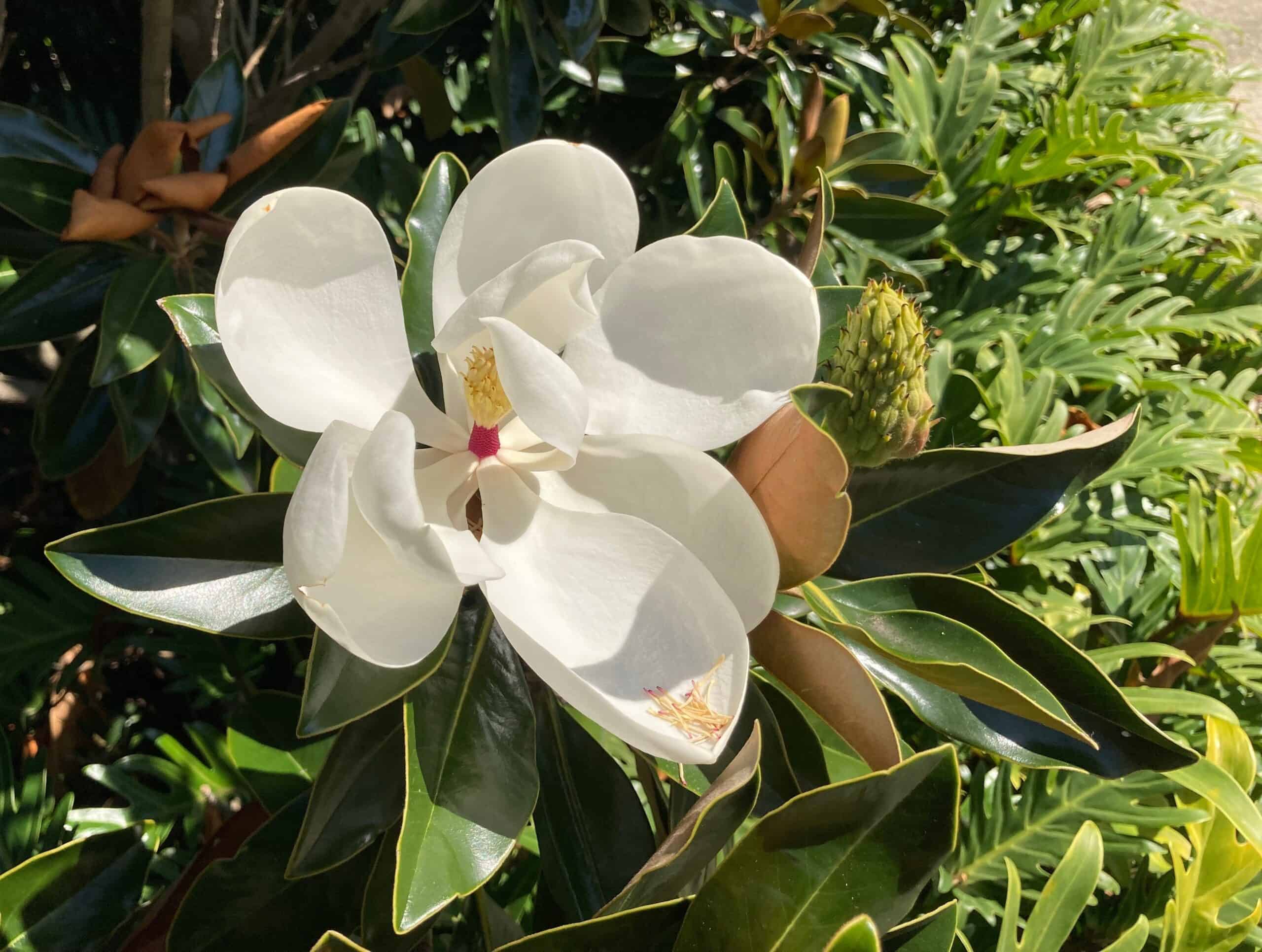
The Sweetbay Magnolia is a beautiful, semi-evergreen tree native to the southeastern United States, known for its fragrant, creamy-white flowers and glossy, dark green leaves. This tree thrives in wetlands and along the edges of swamps, where it plays a vital role in the ecosystem by providing habitat and food for a variety of wildlife, including birds and insects. While the Sweetbay Magnolia is not as endangered as some other plants on this list, certain populations, particularly those at the northern edge of its range, are at risk due to habitat loss, climate change, and the draining of wetlands for agriculture and development. The destruction of wetland habitats, which are critical for the survival of the Sweetbay Magnolia, has led to a decline in its populations in some areas. Additionally, invasive species that thrive in disturbed environments can outcompete young Sweetbay Magnolias, further threatening the species. Conservation efforts for the Sweetbay Magnolia focus on protecting and restoring wetland habitats, promoting the use of native plants in landscaping to prevent the spread of invasive species, and monitoring the impacts of climate change on the species’ range. Preserving the Sweetbay Magnolia is important not only for its ecological role but also for its cultural significance, as it has been a beloved ornamental tree in Southern gardens for centuries.
Golden Barrel Cactus (Echinocactus grusonii)
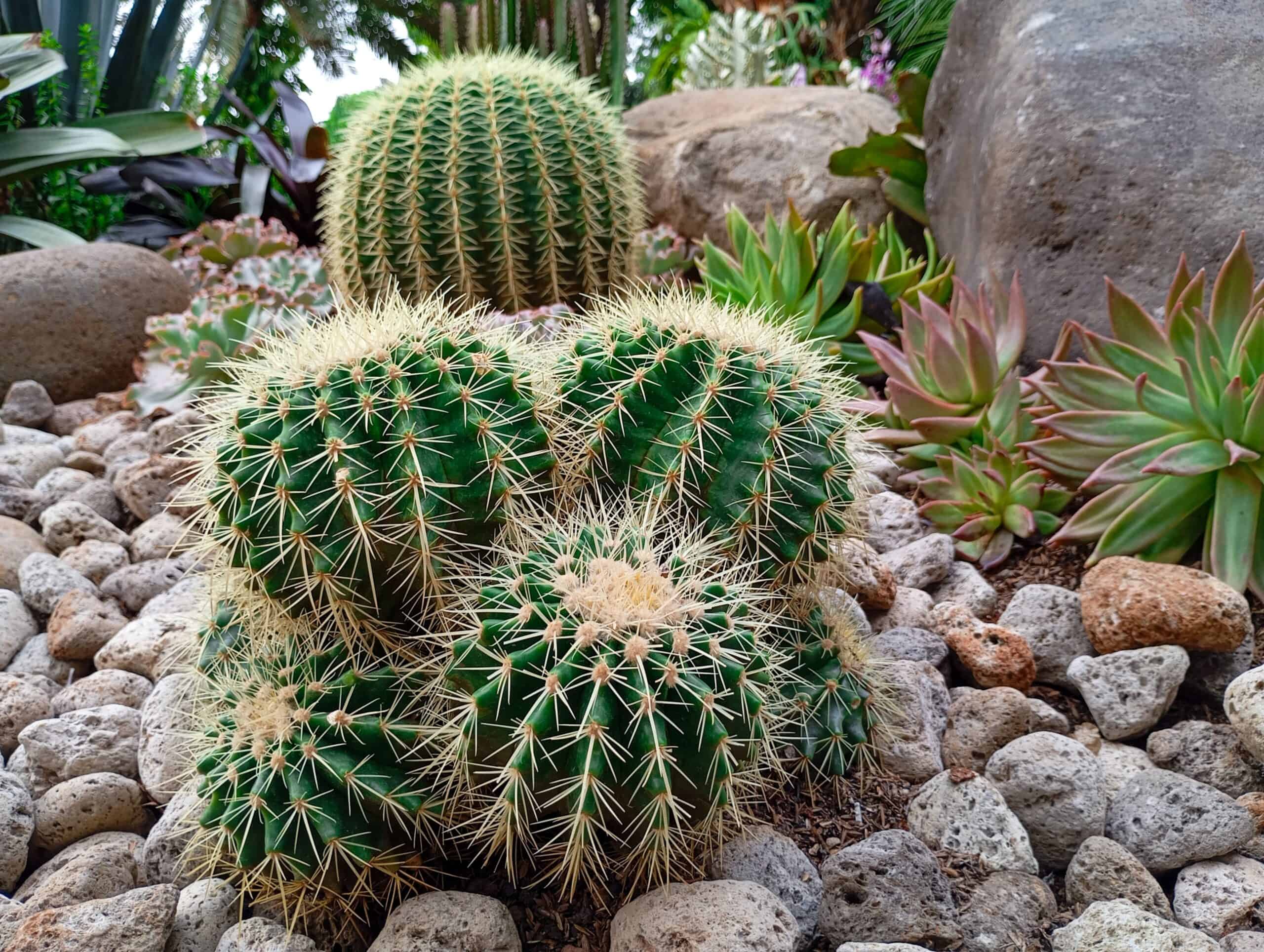
The Golden Barrel Cactus, also known as “Mother-in-Law’s Cushion,” is one of the most recognizable cacti species, renowned for its striking spherical shape and bright yellow spines. Native to the deserts of central Mexico, this cactus has become a popular ornamental plant worldwide, often used in xeriscaping due to its drought tolerance and unique appearance. Despite its popularity in cultivation, the Golden Barrel Cactus is critically endangered in the wild. The species’ natural habitat has been severely reduced due to agricultural expansion, the construction of dams, and illegal collection for the horticultural trade. The flooding of its native habitats by dam construction has been particularly devastating, leading to the loss of much of its natural range. Overharvesting from the wild, driven by demand from collectors and gardeners, has further depleted the remaining populations. Conservation efforts for the Golden Barrel Cactus include habitat protection and restoration, regulation of trade through CITES (the Convention on International Trade in Endangered Species of Wild Fauna and Flora), and cultivation in botanical gardens and nurseries to reduce pressure on wild populations. Protecting the Golden Barrel Cactus is not only crucial for preserving a species that is emblematic of the Mexican desert but also for maintaining the ecological balance of the desert ecosystems where it plays a vital role.
San Francisco Lessingia (Lessingia germanorum)
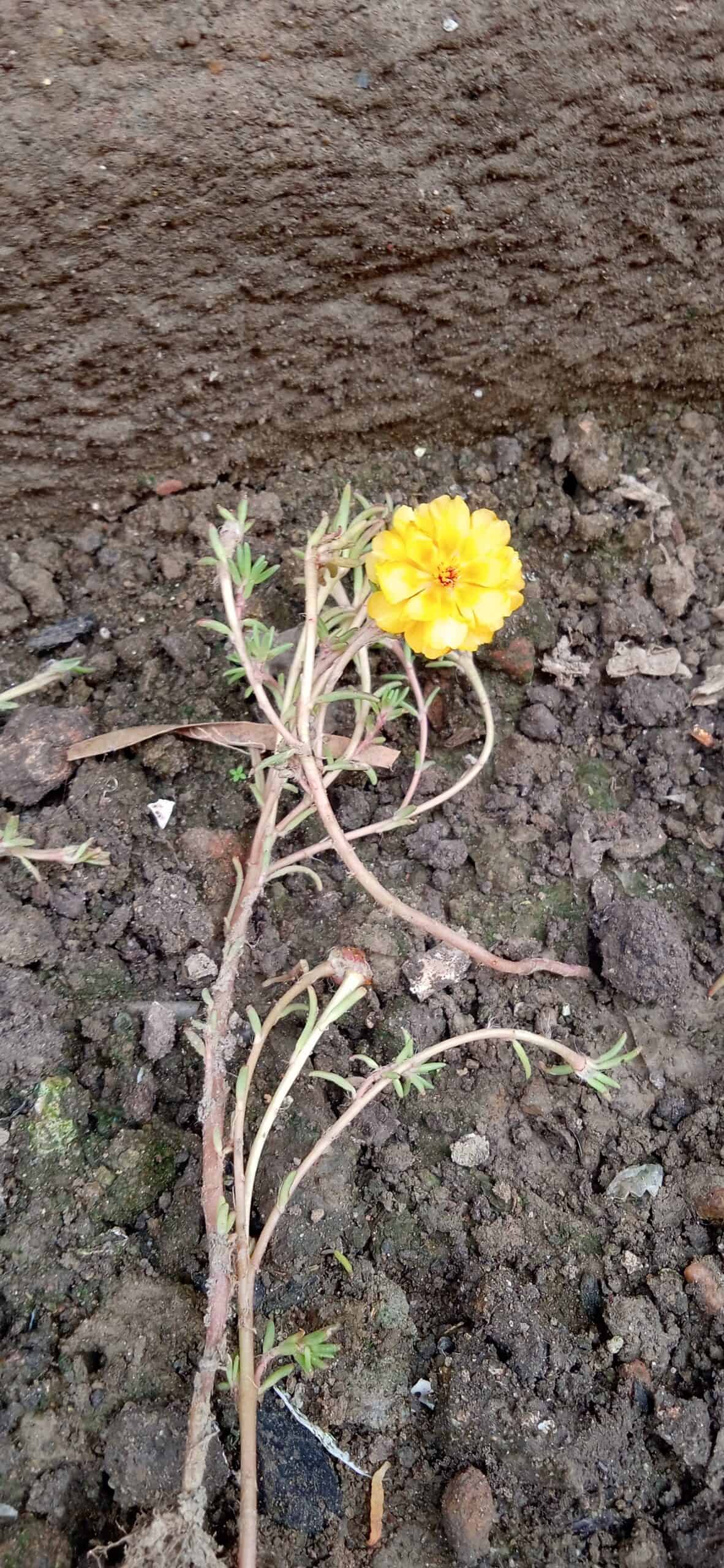
San Francisco Lessingia is a small, daisy-like flowering plant that is endemic to the sand dunes of San Francisco. This plant is characterized by its silvery leaves and clusters of small, yellow flowers that bloom in the late summer and fall. Once widespread across the sand dunes of the San Francisco Peninsula, San Francisco Lessingia is now critically endangered, with its natural habitat reduced to just a few scattered patches due to urban development, habitat fragmentation, and the spread of invasive species. The construction of roads, buildings, and other infrastructure has destroyed much of the sand dune habitat that this plant depends on, while the remaining areas have been further degraded by invasive plants that outcompete native species for resources. The fragmentation of its habitat has isolated populations, making it difficult for the plant to reproduce and maintain genetic diversity. Conservation efforts for San Francisco Lessingia focus on habitat restoration, including the removal of invasive plants, the reintroduction of native dune vegetation, and the creation of protected areas where the plant can thrive. The survival of San Francisco Lessingia is crucial not only for preserving a unique species but also for protecting the fragile sand dune ecosystems that are home to a variety of specialized plants and animals.
Yellow Coneflower (Echinacea paradoxa)
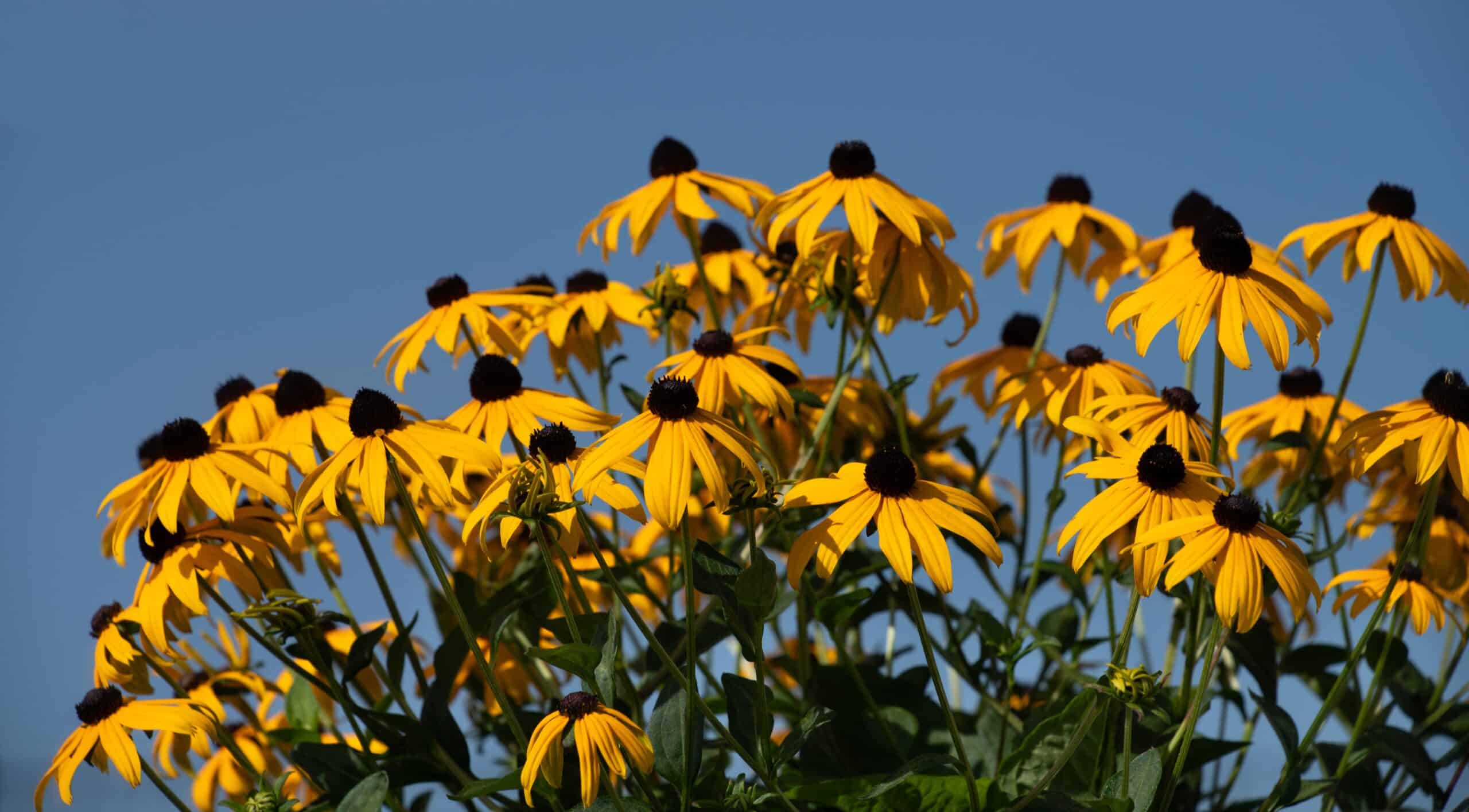
The Yellow Coneflower, also known as Bush’s Coneflower, is a striking and unusual member of the Echinacea genus, which is better known for its purple-flowered species like the Purple Coneflower. Native to the Ozark region of Missouri, Arkansas, and Oklahoma, the Yellow Coneflower is distinguished by its bright yellow petals and dark, spiky central cone. This plant is adapted to the rocky, calcareous soils of the Ozarks, where it blooms in the late spring and early summer. Unfortunately, the Yellow Coneflower is considered endangered due to habitat loss from agriculture, urban development, and overgrazing. The plant’s specialized habitat requirements make it particularly vulnerable to environmental changes, and its populations have become increasingly fragmented and isolated. Conservation efforts for the Yellow Coneflower include habitat protection, the propagation of plants in nurseries and botanical gardens, and the promotion of native plant gardening to increase awareness and appreciation for this unique species. Protecting the Yellow Coneflower is essential not only for its ecological role as a pollinator-friendly plant but also for preserving the biodiversity of the Ozark region, which is home to many other rare and endemic species.
Coast Rock Cress (Arabis blepharophylla)
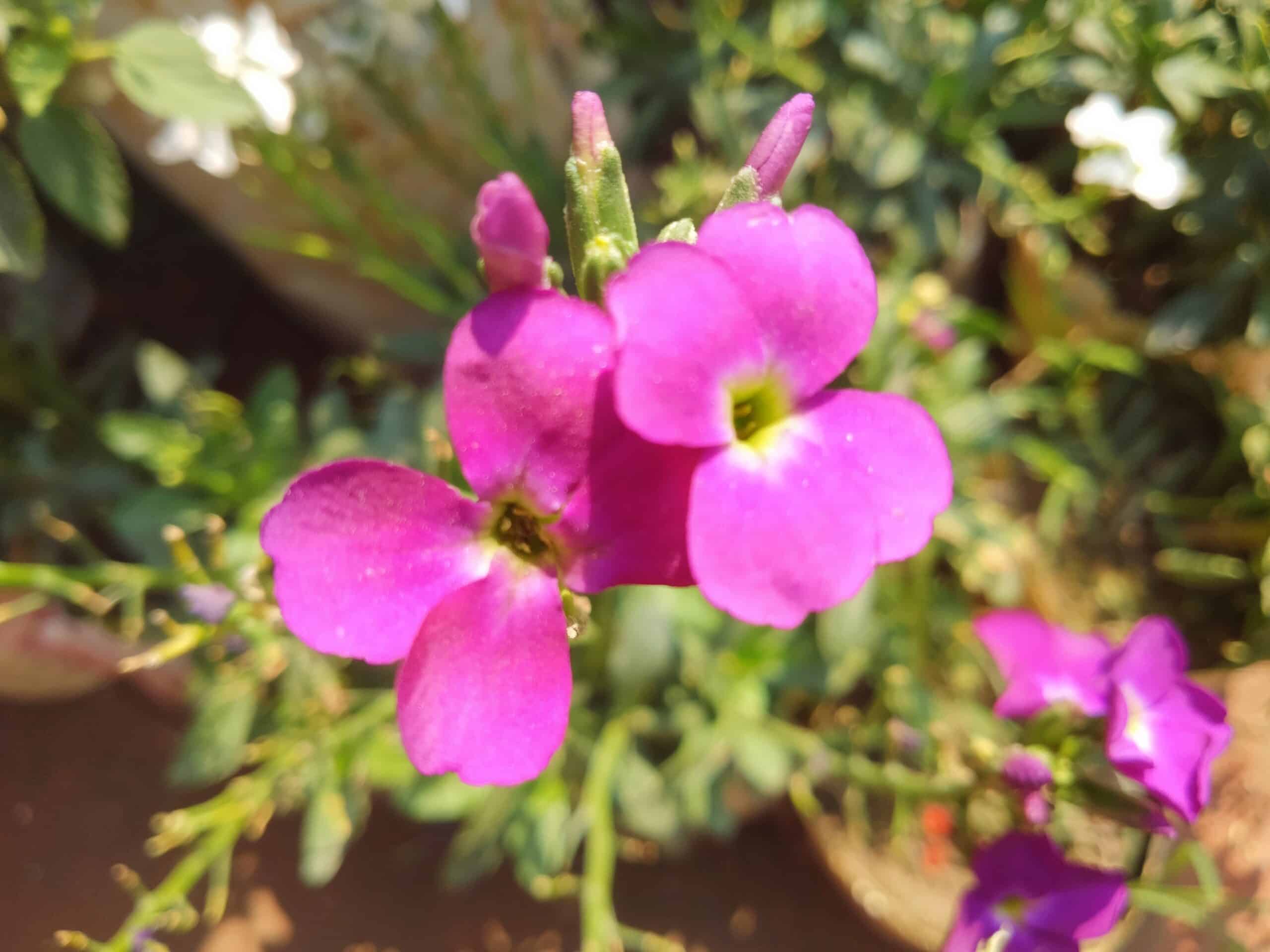
Coast Rock Cress is a small, perennial plant that is native to the rocky coastal cliffs of California. This plant is recognized for its bright pink or purple flowers that bloom in dense clusters, contrasting beautifully with its gray-green foliage. Coast Rock Cress is adapted to survive in the harsh conditions of coastal cliffs, where it grows in shallow, nutrient-poor soils and is exposed to strong winds and salt spray. However, Coast Rock Cress is considered endangered due to habitat loss from coastal development, erosion, and competition from invasive species. The construction of homes, roads, and other infrastructure along the California coast has destroyed much of the plant’s natural habitat, while the remaining areas are threatened by erosion, which can wash away the thin soils that the plant depends on. Invasive species, such as non-native grasses and shrubs, also pose a significant threat by outcompeting Coast Rock Cress for resources. Conservation efforts for Coast Rock Cress include habitat protection, erosion control, and the propagation of the plant in botanical gardens and nurseries. Protecting Coast Rock Cress is crucial not only for preserving a unique plant species but also for maintaining the ecological integrity of California’s coastal cliffs, which are home to many other rare and endemic species.
Rose Pogonia (Pogonia ophioglossoides)
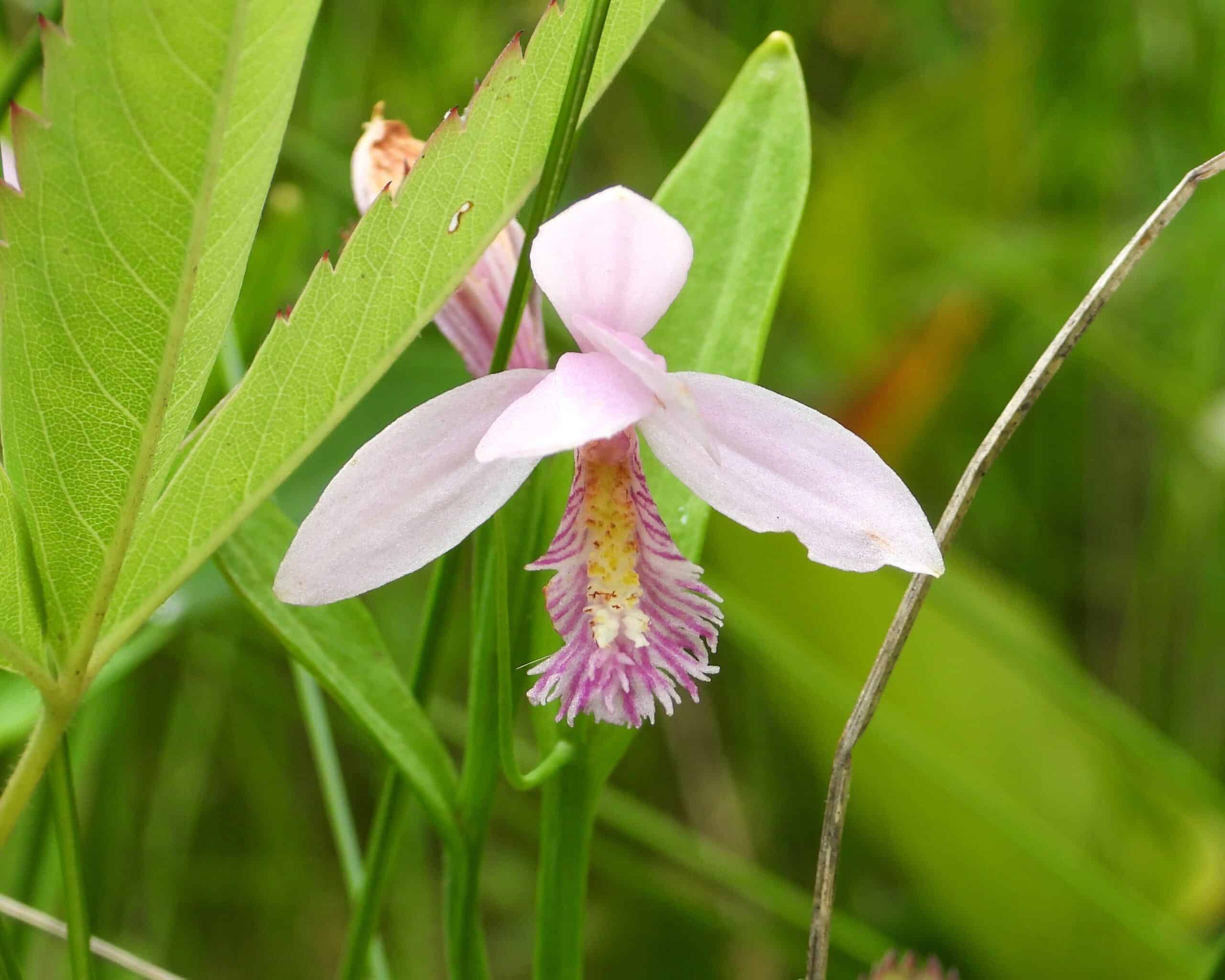
Rose Pogonia, also known as Snakemouth Orchid, is a delicate and beautiful orchid that is native to the wetlands of eastern North America. This orchid is easily recognizable by its pale pink flowers with a fringed lip, which bloom in the early summer. Rose Pogonia thrives in the acidic, nutrient-poor soils of bogs, fens, and wet meadows, where it plays a vital role in the ecosystem by providing nectar for pollinators such as bees and butterflies. However, Rose Pogonia is threatened by habitat loss due to wetland drainage, development, and pollution. As wetlands are destroyed or altered for agriculture, urbanization, and other forms of development, the natural habitats of Rose Pogonia are disappearing, leading to a decline in its populations. Additionally, changes in hydrology and water quality, such as increased nutrient runoff and pollution, can have significant impacts on the delicate balance required for the orchid’s survival. Conservation efforts for Rose Pogonia focus on protecting and restoring wetland habitats, promoting sustainable land use practices, and raising awareness about the importance of wetland ecosystems. Preserving Rose Pogonia is essential not only for its beauty and ecological role but also for the health of the wetland habitats it represents, which are among the most biodiverse and ecologically valuable ecosystems on Earth.
Prickly Pear Cactus (Opuntia spp.)
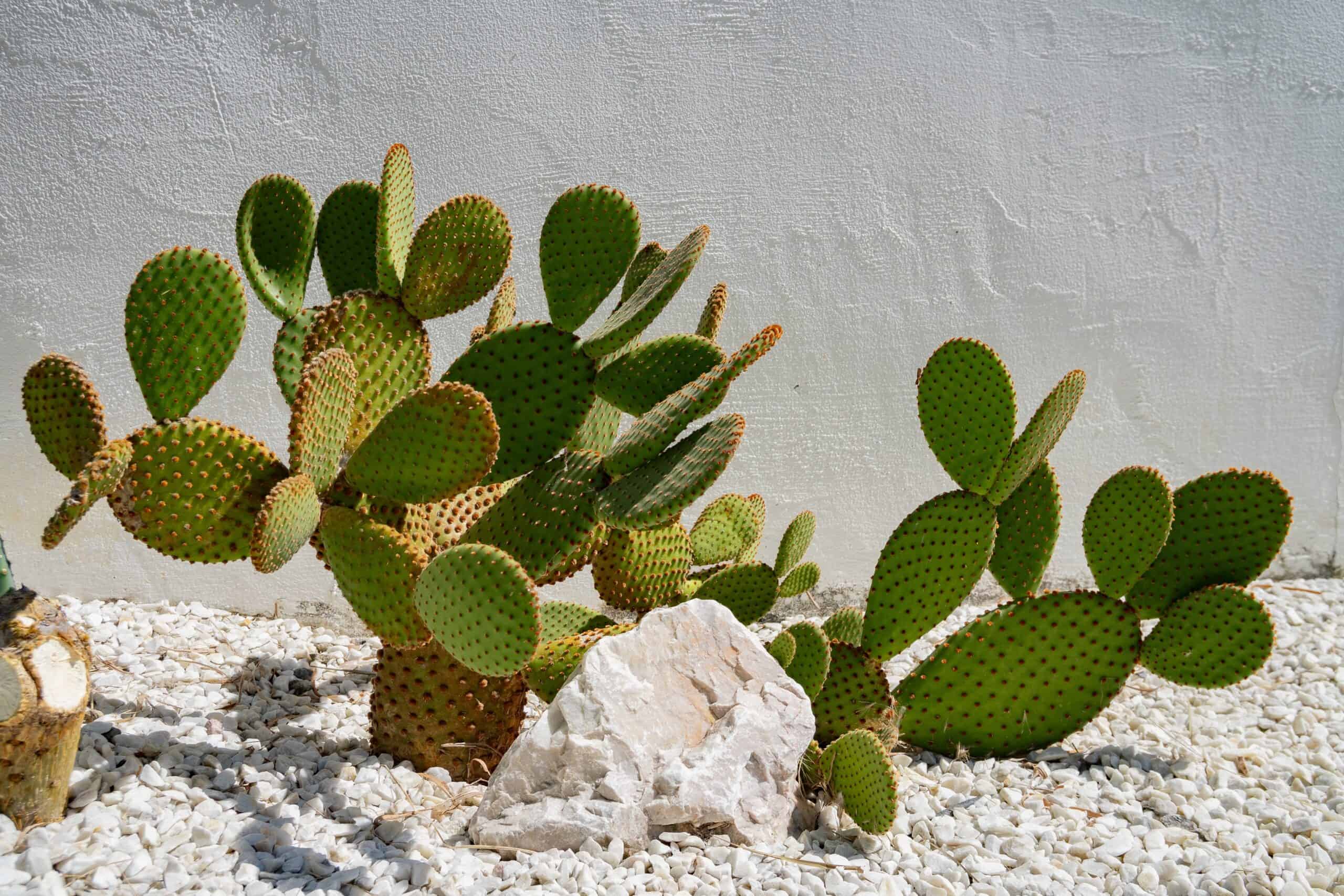
The Prickly Pear Cactus is a diverse group of cacti that are native to the Americas, with species found from Canada to Argentina. These cacti are known for their flat, paddle-shaped stems, which are covered in spines, and their bright, colorful flowers, which can be yellow, red, pink, or orange. Prickly Pear Cacti are adapted to a wide range of habitats, from deserts to grasslands, and play a crucial role in their ecosystems by providing food and shelter for a variety of wildlife. However, some species of Prickly Pear Cactus are critically endangered, particularly those found on small islands or in specific habitats that are threatened by human activities. The primary threats to Prickly Pear Cacti include habitat destruction from agriculture, urban development, and overgrazing, as well as the introduction of invasive species, such as the Cactoblastis moth, which was introduced to control invasive cacti but has also attacked native species. In some cases, climate change is also affecting the distribution and survival of Prickly Pear Cacti, particularly in areas where changes in temperature and precipitation patterns are altering the availability of water. Conservation efforts for Prickly Pear Cacti include habitat protection, the control of invasive species, and the cultivation of endangered species in botanical gardens and nurseries. Protecting Prickly Pear Cacti is important not only for preserving the diversity of this iconic group of plants but also for maintaining the ecological balance of the ecosystems where they play a key role.
Possumhaw Viburnum (Viburnum nudum)

Possumhaw Viburnum, also known as Smooth Witherod, is a deciduous shrub native to the southeastern United States. This plant is known for its attractive clusters of white flowers, which bloom in late spring, followed by berries that change color from pink to blue as they ripen in the fall. Possumhaw Viburnum thrives in wetland habitats, such as swamps, marshes, and along the edges of streams, where it provides food and shelter for a variety of wildlife, including birds and pollinators. However, certain populations of Possumhaw Viburnum are threatened by habitat loss due to wetland drainage, development, and the encroachment of invasive species. The destruction of wetland habitats, which are critical for the survival of Possumhaw Viburnum, has led to a decline in its populations in some areas. Additionally, the fragmentation of its remaining habitats has isolated populations, making it difficult for the species to reproduce and maintain genetic diversity. Conservation efforts for Possumhaw Viburnum focus on protecting and restoring wetland habitats, promoting the use of native plants in landscaping, and monitoring the impacts of climate change on the species’ range. Preserving Possumhaw Viburnum is important not only for its ecological role but also for its cultural significance, as it has been used by Native American tribes for medicinal purposes for centuries.
Marin Western/Dwarf Flax (Hesperolinon congestum)

Marin Western Flax, also known as Dwarf Flax, is a small, annual wildflower that is endemic to the serpentine soils of Marin County, California. This delicate plant is part of the Linaceae family and is known for its slender stems, narrow leaves, and small, pale yellow flowers that bloom in the late spring and early summer. Marin Western Flax is highly specialized to its serpentine habitat, which is low in nutrients and toxic to many other plants, making it an important component of the region’s unique serpentine grasslands. However, Marin Western Flax is critically endangered, with its populations severely reduced due to habitat loss, urban development, and the invasion of non-native plants. The construction of buildings, roads, and other infrastructure in Marin County has destroyed much of the plant’s natural habitat, while the remaining areas have been degraded by invasive species that outcompete native plants for resources. Conservation efforts for Marin Western Flax focus on protecting and restoring its remaining habitat, controlling invasive species, and cultivating the plant in botanical gardens and seed banks to ensure its survival. The preservation of Marin Western Flax is not only important for protecting a unique and beautiful wildflower but also for maintaining the biodiversity of the serpentine grasslands, which are home to many other rare and endemic species.
Franciscan Thistle (Cirsium andrewsii)
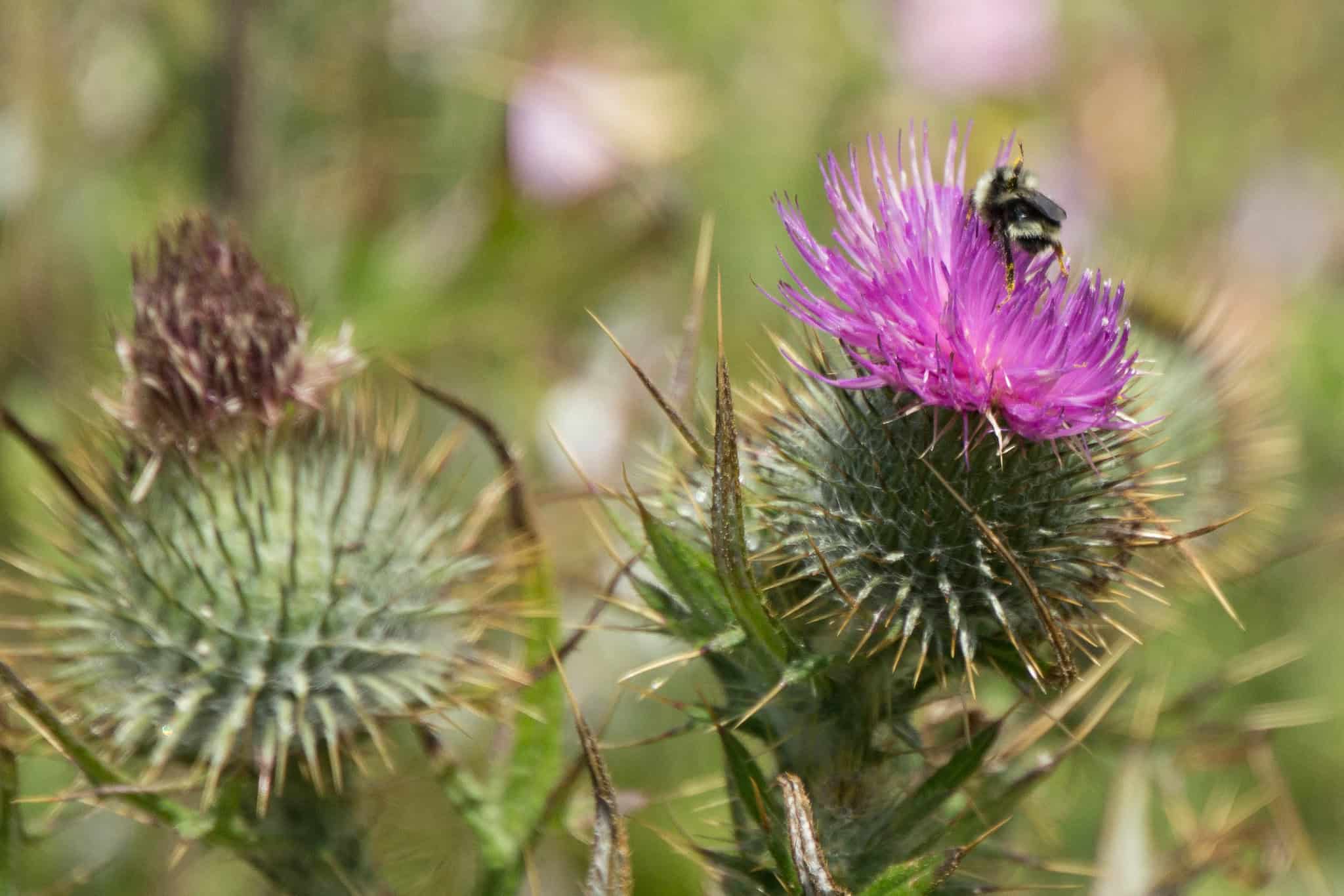
The Franciscan Thistle is a rare and distinctive thistle species that is endemic to the San Francisco Peninsula in California. This plant is known for its tall, spiny stems, gray-green leaves, and striking purple or pink flowers that bloom in the late spring and early summer. The Franciscan Thistle is well-adapted to the coastal prairies and scrublands of the San Francisco Peninsula, where it grows in sandy, well-drained soils. However, this thistle is critically endangered, with its populations drastically reduced due to habitat loss, urban development, and the invasion of non-native plants. Coastal development has destroyed much of the Franciscan Thistle’s natural habitat, leaving only a few small, isolated populations that are vulnerable to extinction. Invasive species, such as non-native grasses and shrubs, have further degraded the remaining habitat, outcompeting the Franciscan Thistle for water, light, and nutrients. Conservation efforts for the Franciscan Thistle focus on protecting and restoring its coastal habitat, controlling invasive species, and cultivating the plant in botanical gardens to ensure its survival. The Franciscan Thistle serves as a reminder of the fragility of coastal ecosystems and the need to protect the native species that inhabit them. By preserving the Franciscan Thistle, we also protect the unique landscapes and biodiversity of the California coast.
Michael’s Rein Orchid (Piperia michaelii)
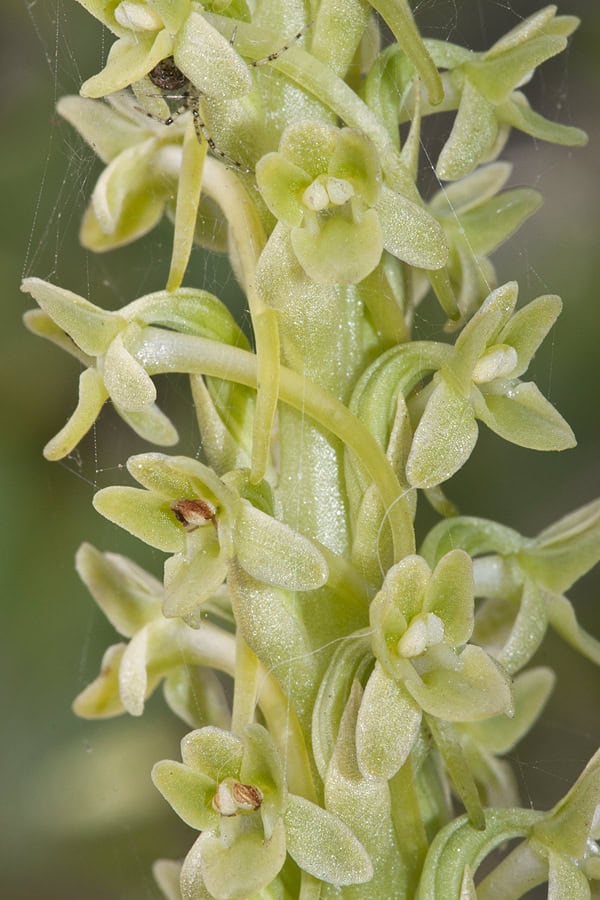
Michael’s Rein Orchid is a rare and delicate orchid that is endemic to the coastal regions of California, from Mendocino County to Monterey County. This orchid is known for its slender stems, narrow leaves, and small, greenish-white flowers that bloom in the late spring and early summer. Michael’s Rein Orchid grows in a variety of habitats, including coastal scrub, grasslands, and woodlands, where it is often found in sandy or gravelly soils. However, this orchid is critically endangered, with its populations severely reduced due to habitat loss, urban development, and the invasion of non-native plants. The construction of homes, roads, and other infrastructure along the California coast has destroyed much of the orchid’s natural habitat, while the remaining areas have been degraded by invasive species that outcompete native plants for resources. Additionally, the fragmentation of its habitat has isolated populations, making it difficult for the orchid to reproduce and maintain genetic diversity. Conservation efforts for Michael’s Rein Orchid focus on protecting and restoring its coastal habitat, controlling invasive species, and cultivating the orchid in botanical gardens to ensure its survival. The preservation of Michael’s Rein Orchid is not only important for protecting a unique and beautiful plant but also for maintaining the biodiversity of California’s coastal ecosystems.
This article originally appeared on Rarest.org.
More from Rarest.org

Gold coins have long been prized not just for their intrinsic value but also for their historical significance and beauty. Read more.
Exploring the dense forests at night reveals a hidden world of rarely seen nocturnal animals. These creatures are masters of stealth, adapted to thrive in the darkness. Each animal has unique characteristics that make it fascinating and elusive. Read more.
Zoos around the world aim to provide visitors with a glimpse of rare and exotic wildlife. Housing these fascinating creatures not only attracts visitors but also aids in conservation efforts. Read more.


